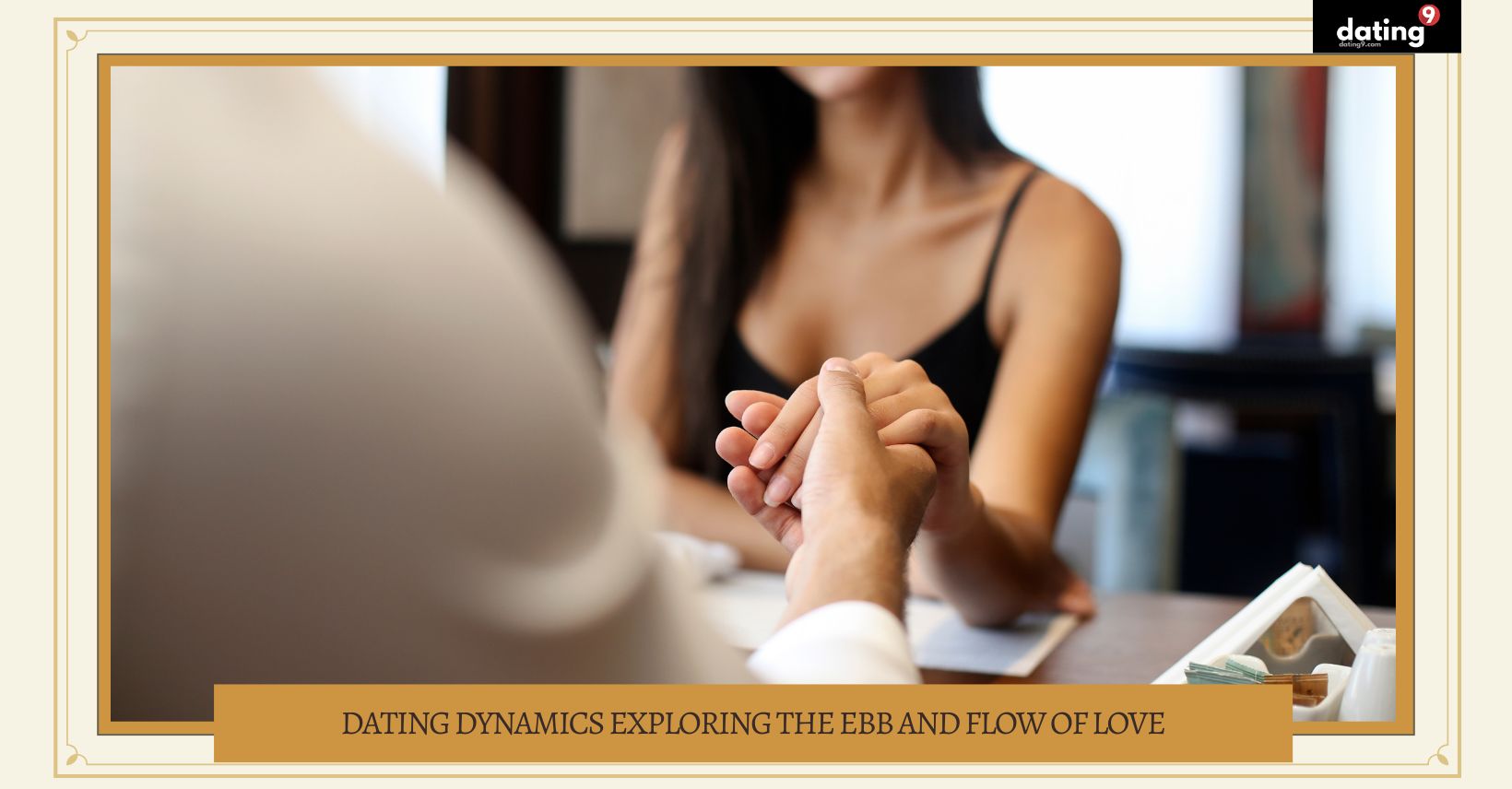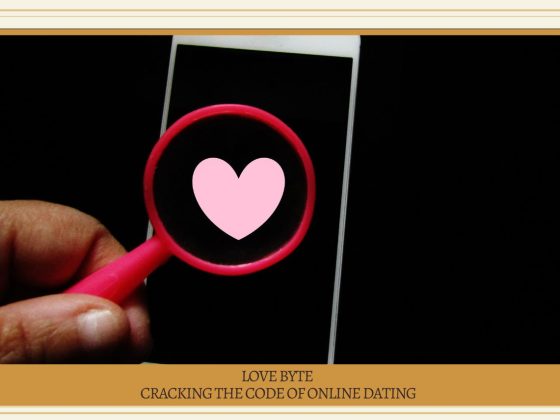Welcome to the unpredictable world of dating, where love can be both exciting and difficult. If you have ever felt confused by the ups and downs of relationships or are looking for answers to your dating problems, this article is for you. By delving into the intricacies of love, you will gain insight and understanding into this crucial element of human connection.
What Is Dating Dynamics?
Dating dynamics refers to the patterns and behaviours that exist within romantic relationships. It encompasses the ever-changing nature of love and explores the ebb and flow of emotions, communication and compatibility between partners. Understanding dating dynamics involves recognising the various factors that influence relationship dynamics, such as individual personalities, cultural norms and societal expectations. It involves navigating the complexities of attraction, intimacy and commitment. Dating dynamics also involve recognising that relationships evolve over time and require effort, compromise and effective communication to thrive.
By understanding dating dynamics, individuals can gain insight into their own relationship patterns and make informed decisions about their romantic lives. So, what is dating dynamics? It is the fascinating study of the mechanics of romance and the intricate dance between two people seeking a meaningful connection. Modern Mingle is redefining relationships through this unique lens of understanding.
Fact: Studies have shown that couples who actively engage in open and honest communication are more likely to have successful and fulfilling long-term relationships.
What Are the Different Stages of Dating?
The journey of dating can be filled with excitement, uncertainty, and ultimately, the potential for love. But it’s not always a smooth ride – there are distinct stages that most relationships go through. In this section, we will take a closer look at the different stages of dating, from the initial attraction to building a strong connection and committing to a long-term relationship. Each stage brings its own set of challenges and joys, and understanding them can help us navigate the dating world with more clarity and intention.
1. Attraction
When it comes to dating dynamics, attraction plays a crucial role in initiating a romantic connection. Here are some steps in the process of attraction:
- Physical attraction: This is the initial spark that draws two people together based on appearance and chemistry.
- Emotional connection: As individuals spend more time together, they begin to develop an emotional bond and deeper understanding of each other.
- Shared values and interests: Discovering common values, hobbies, and interests helps to solidify the attraction and create a sense of compatibility.
- Intellectual compatibility: Engaging in meaningful conversations and intellectual stimulation further deepens the attraction.
- Sense of humor: A shared sense of humor creates a positive and enjoyable atmosphere, fostering a stronger attraction.
To enhance attraction, it is important to be authentic, take care of oneself, and show genuine interest in the other person. Remember, attraction is just the starting point, and building a strong foundation requires effort and compatibility in various aspects of a relationship. The science of online dating is an integral part of today’s virtual world.
2. Getting to Know Each Other
When it comes to dating dynamics, getting to know each other is a crucial stage in building a connection. This stage allows individuals to discover shared interests, values, and goals, further determining compatibility. Here are some steps to navigate this phase:
- Initial conversations: Engage in light-hearted conversations to break the ice and establish a comfortable rapport.
- Shared activities: Plan and participate in activities together to learn more about each other’s interests and hobbies.
- Deep conversations: Gradually delve into deeper topics, such as life goals, family background, and personal values.
- Active listening: Pay attention to your partner’s words, emotions, and body language to gain a deeper understanding of who they are.
- Building trust: Share personal experiences and vulnerabilities to foster trust and emotional intimacy.
- Exploring commonalities: Discover shared values, passions, and goals to create a solid foundation for a meaningful connection.
Fact: Did you know that studies have shown that couples who engage in activities together during the “getting to know each other” stage have higher relationship satisfaction?
3. Building a Connection
Building a connection is an essential step in the dating process, as it lays the foundation for a strong and meaningful relationship. Here are some steps to help you build a connection with your partner:
- Engage in active listening: Show genuine interest in what your partner has to say and actively listen to their thoughts, feelings, and experiences.
- Share personal stories and experiences: Open up and share your own stories and experiences to create a deeper level of understanding and connection.
- Find common interests: Discover shared hobbies, activities, or passions that you both enjoy, as this can provide a strong bond and opportunities for quality time together.
- Be vulnerable and authentic: Allow yourself to be vulnerable and express your true thoughts and emotions, as this will encourage your partner to do the same.
- Create shared goals: Discuss and establish shared goals for the relationship, such as future plans or aspirations, to create a sense of partnership and direction.
- Build trust: Trust is crucial for a strong connection. Be reliable, honest, and dependable in your actions and words.
By following these steps, you can cultivate a deep and meaningful connection with your partner, laying the groundwork for a successful and fulfilling relationship.
4. Commitment
Commitment is a crucial stage in dating dynamics, as it signifies a deeper level of dedication and exclusivity between two individuals. Here are the steps involved in navigating the commitment phase:
- Evaluation: Assess the compatibility, values, and long-term goals of both partners to determine if a committed relationship is viable.
- Communication: Engage in open and honest conversations about expectations, desires, and the level of commitment each person is comfortable with.
- Mutual Agreement: Reach a consensus on the terms and boundaries of the committed relationship, such as exclusivity, future plans, and level of involvement.
- Shared Vision: Establish a shared vision for the future, including goals, dreams, and aspirations as a couple.
- Investment: Invest time, effort, and emotional energy into the relationship to foster growth and deepen the connection.
- Support: Provide support and encouragement to each other, creating a safe and nurturing environment that nurtures the commitment.
- Adaptation: Adjust and adapt as the relationship evolves, being open to compromise and communication to sustain the commitment.
By following these steps, couples can navigate the commitment stage successfully, fostering a strong and resilient foundation for their relationship.
What Factors Affect the Ebb and Flow of Love?
In the constantly evolving path of love, there are numerous aspects that can influence the ups and downs of a relationship. These aspects can vary from internal dynamics such as communication and trust, to external influences like societal expectations and family dynamics. In this section, we will explore the different elements that can impact the ups and downs of love, including the significance of establishing boundaries, self-reflection, and seeking support. By comprehending these factors, we can navigate the intricacies of love and build healthier, more satisfying relationships.
1. Communication
In dating dynamics, communication plays a crucial role in establishing a strong foundation for a healthy relationship. Here are some steps to improve communication:
- Active listening: Pay attention and show genuine interest in what your partner is saying.
- Express yourself: Clearly communicate your thoughts, feelings, and needs to your partner.
- Be open and honest: Share your thoughts, concerns, and emotions openly, fostering trust and understanding.
- Non-verbal cues: Pay attention to non-verbal cues, such as body language and facial expressions, to better understand your partner.
- Clarify and ask questions: Seek clarification when needed and ask questions to show interest and ensure mutual understanding.
Effective communication is essential for resolving conflicts, building trust, and maintaining a strong connection in a relationship. Remember, communication is a two-way street, and both partners need to actively engage and listen to each other. By consistently practicing open and honest communication, you can foster a healthy and fulfilling relationship.
2. Trust
Trust is a vital aspect of dating relationships. It serves as the basis for a strong and healthy connection. Trust is developed over time through consistent actions, open communication, and honesty. It involves having faith in your partner’s intentions, dependability, and loyalty. Check this for trust.
To establish trust in a relationship, it is important to:
- Be open and honest: Share your thoughts, feelings, and experiences openly with your partner.
- Be reliable: Follow through on your commitments and be consistent in your actions.
- Be truthful: Avoid keeping secrets or betraying your partner’s trust.
- Respect boundaries: Give your partner space, privacy, and respect their individuality.
- Communicate effectively: Listen actively, express your needs and concerns, and address issues honestly.
A true story that emphasizes the importance of trust in dating relationships involves a couple who faced difficulties due to past betrayals. Through open communication, setting boundaries, and seeking therapy, they were able to rebuild trust and develop a strong bond based on honesty and dependability. Trust became the foundation of their relationship, enabling them to successfully navigate the challenges of dating dynamics.
3. Compatibility
When it comes to dating dynamics, compatibility plays a crucial role in the success of a relationship. Here are some steps to consider when assessing compatibility:
- Shared values and goals: Determine if you have similar beliefs, values, and long-term aspirations.
- Interests and hobbies: Evaluate if you enjoy doing activities together and share common interests.
- Communication styles: Assess whether your communication styles align and if you can effectively communicate and understand each other.
- Conflict resolution: Consider how you handle conflicts and if you can work through disagreements in a healthy and respectful manner.
- Emotional connection: Reflect on the emotional bond you have and if you feel understood, supported, and valued by your partner.
Remember, compatibility is not just about having everything in common. It’s about finding a balance and complementing each other’s strengths and weaknesses. It’s important to be honest with yourself and your partner about your needs and expectations to ensure a compatible and fulfilling relationship.
4. External Influences
External influences play a significant role in the ebb and flow of love in dating dynamics. These influences can come from various sources and have a significant impact on the relationship. Here are some examples of external influences in dating:
- Social and cultural norms: Society and cultural expectations can shape how individuals approach dating and relationships. They can influence ideas about gender roles, expectations around commitment, and acceptable behaviors.
- Family and friends: The opinions and advice of loved ones can affect how individuals navigate their relationships. Family and friends may have different perspectives and may offer guidance or influence decisions.
- Work and career: Career demands and work-related stress can impact the amount of time and energy individuals can dedicate to their relationships. Work-life balance can be a challenge and affect the quality of the relationship.
- Technology and social media: The rise of technology and social media has introduced new challenges in dating dynamics. It can create opportunities for miscommunication, jealousy, and comparison with others.
To navigate these external influences, couples should prioritize open communication, set boundaries, engage in self-reflection, and seek support when needed. By understanding and addressing external influences, couples can build healthier and more resilient relationships.
Open Communication
Open communication is vital in all relationships as it encourages understanding, trust, and emotional closeness. It involves openly and honestly expressing thoughts, feelings, and needs to your partner. This type of communication enables both individuals to feel heard and validated. It also helps prevent misunderstandings and conflicts by promptly and respectfully addressing issues.
Developing open communication requires active listening skills, empathy, and a willingness to be vulnerable. It involves creating a safe space where both partners feel comfortable expressing themselves without fear of judgement or criticism. Regularly checking in with each other, sharing goals and ambitions, and addressing concerns as they arise are all crucial aspects of open communication.
By cultivating open communication in a relationship, couples can establish a strong foundation for long-lasting love and mutual growth. It allows them to navigate challenges together, support each other’s dreams, and form a deep emotional bond. Ultimately, open communication leads to a healthier and more fulfilling relationship.
2. Setting Boundaries
Setting boundaries is crucial in navigating the ups and downs of dating dynamics. It helps establish healthy relationships and ensures that both partners feel respected and comfortable.
Here are some steps to consider when setting boundaries:
- Reflect on your values and needs: Understand what you are comfortable with and what your deal-breakers are. Reflect on your past experiences and learn from them.
- Communicate openly: Clearly express your boundaries to your partner. Be honest about your expectations and discuss what is acceptable and what is not.
- Be assertive: Stand firm in your boundaries and don’t be afraid to say no if something doesn’t align with them. Respect your own needs and don’t compromise them for the sake of the relationship.
- Respect your partner’s boundaries: Listen to your partner’s boundaries and ensure that you respect them as well. Mutual respect is the foundation of a healthy relationship.
- Reevaluate and adjust if necessary: Boundaries may evolve over time, so it’s important to reevaluate them periodically. Adapt and adjust boundaries as needed to ensure they align with your evolving needs and values.
Setting boundaries is an ongoing process that requires open communication, self-awareness, and mutual respect. It’s an essential aspect of creating a healthy and fulfilling dating dynamic.
3. Self-Reflection
When navigating the ups and downs of dating dynamics, self-reflection plays a crucial role in personal growth and creating healthy relationships. Here are some steps to engage in self-reflection:
- Reflect on past experiences: Take time to reflect on past relationship patterns and identify any recurring themes or behaviors.
- Identify personal values and goals: Consider what values and goals are important to you in a relationship. This will help you align with potential partners who share similar values.
- Explore personal strengths and weaknesses: Reflect on your strengths and areas for growth. This self-awareness can assist in improving yourself and understanding what you bring to a relationship.
- Assess emotional needs: Understand your emotional needs and how they can be met in a relationship. This will allow you to communicate your needs effectively to potential partners.
- Practice self-care: Prioritize self-care and self-love, as a healthy relationship starts with a solid foundation of self-worth and self-esteem.
- Seek feedback: Openly seek feedback from trusted friends or a therapist to gain additional insights into your dating experiences and areas for improvement.
Engaging in self-reflection can lead to personal growth, improve self-awareness, and ultimately contribute to building healthier and more fulfilling relationships.
4. Seeking Support
When navigating the ups and downs of dating dynamics, seeking support can be crucial for emotional well-being and relationship growth. Here are some steps to seek support:
- Talk to friends and family: Share your experiences and concerns with trusted loved ones who can offer advice, perspective, and emotional support.
- Seek professional help: Consider seeing a therapist or counsellor who specialises in relationships. They can provide guidance, help you develop healthy coping mechanisms, and offer tools for effective communication.
- Join support groups or online communities: Connect with others who are going through similar experiences. Sharing your journey with a community of like-minded individuals can provide validation, understanding, and encouragement.
- Engage in self-help resources: Read books, listen to podcasts, or attend workshops that focus on dating and relationship dynamics. These resources can offer insights, strategies, and practical tips for navigating challenges.
Sarah and John sought support from a couples therapist to navigate their differences in expectations. Through open communication, they were able to understand each other’s needs better and find a compromise that worked for both of them. With the therapist’s guidance, they developed tools to strengthen their relationship and build a solid foundation for the future. Seeking support played a crucial role in their journey towards a healthier and happier relationship.
What Are Some Common Challenges in Dating Dynamics?
Dating can be a rollercoaster of emotions, with its ups and downs, twists and turns. But what are some of the common challenges that couples face in their dating dynamics? In this section, we will delve into the various obstacles that can arise and create tension in relationships. From the fear of commitment to personal insecurities, conflicting expectations, and busy schedules, we will explore the complexities of navigating the ebb and flow of love.
1. Fear of Commitment
The fear of commitment is a common challenge in dating dynamics. Overcoming this fear requires understanding and addressing underlying concerns and taking proactive steps towards building a healthy and fulfilling relationship.
- Recognise the fear: Acknowledge and accept that fear of commitment exists.
- Identify the cause: Reflect on past experiences or beliefs that may contribute to the fear.
- Seek support: Share your concerns with a trusted friend or therapist to gain insights and perspective.
- Take it slowly: Gradually increase emotional investment and commitment as comfort levels grow.
- Communicate openly: Discuss relationship expectations and fears with your partner to ensure understanding and build trust.
- Challenge negative thoughts: Replace negative thoughts with positive affirmations to counteract fear-based thinking.
- Work on self-growth: Focus on personal development to build self-confidence and improve self-worth.
2. Insecurities
Insecurities can greatly impact dating dynamics. To navigate these challenges, consider the following steps:
- Recognise and acknowledge your insecurities. Understanding what triggers your insecurities is the first step towards overcoming them.
- Communicate with your partner. Share your insecurities openly and honestly. This creates a safe space for both of you to address any concerns and build trust.
- Work on building self-confidence. Focus on your strengths and achievements. Engage in activities that make you feel good about yourself.
- Challenge negative thoughts. Replace self-doubt with positive affirmations. Surround yourself with supportive and uplifting people.
- Seek professional help if needed. A therapist can provide guidance and support in overcoming deep-rooted insecurities.
Remember, insecurities can affect both partners in a relationship. By addressing and working through them together, you can cultivate a healthier and more fulfilling dating experience.
3. Differences in Expectations
When it comes to dating dynamics, differences in expectations can lead to misunderstandings and conflicts between partners. It is crucial to address and navigate these differences effectively. Here are steps to handle differences in expectations:
- Open and honest communication: Discuss your expectations openly and honestly with your partner. Understand each other’s desires, boundaries, and goals to find common ground.
- Compromise: Find areas where you can compromise to meet halfway. It is essential to understand that both partners may need to adjust their expectations to create a harmonious relationship.
- Active listening: Listen attentively to your partner’s expectations and concerns without interrupting or dismissing their feelings. Acknowledge their perspective and validate their emotions.
- Establish shared goals: Identify shared goals that you both can work towards. This helps align expectations and create a sense of unity in the relationship.
- Regular check-ins: Regularly reassess and discuss your expectations as the relationship progresses. People change, and expectations may evolve over time. Keep the lines of communication open to avoid misunderstandings.
By following these steps, couples can navigate differences in expectations and foster a healthy and fulfilling dating dynamic.
4. Conflicting Schedules
Conflicting schedules can present challenges in dating dynamics. Here are some steps to navigate this issue:
- Plan ahead: Coordinate schedules in advance to find mutually available times for dates.
- Be flexible: Understand that schedules can change and be open to adjusting plans when conflicts arise.
- Make time for each other: Prioritise spending quality time together, even if it means sacrificing other commitments.
- Communicate effectively: Maintain open and honest communication about schedules, expectations, and any challenges that may arise.
- Find creative solutions: Look for alternative ways to connect when physical meetings are not feasible, such as virtual dates or exchanging thoughtful messages.
Remember, dating requires effort and compromise. By actively addressing conflicting schedules, couples can overcome this challenge and strengthen their connection.



